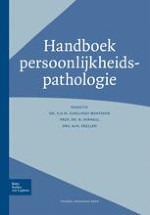2009 | OriginalPaper | Hoofdstuk
2 Infantonderzoek en neurowetenschappen
Auteurs : Marcel Schmeets, Ariëtte van Reekum
Gepubliceerd in: Handboek persoonlijkheidspathologie
Uitgeverij: Bohn Stafleu van Loghum
2009 | OriginalPaper | Hoofdstuk
Auteurs : Marcel Schmeets, Ariëtte van Reekum
Gepubliceerd in: Handboek persoonlijkheidspathologie
Uitgeverij: Bohn Stafleu van Loghum
Print ISBN: 978-90-313-6112-0
Elektronisch ISBN: 978-90-313-6821-1
Copyright: 2009
